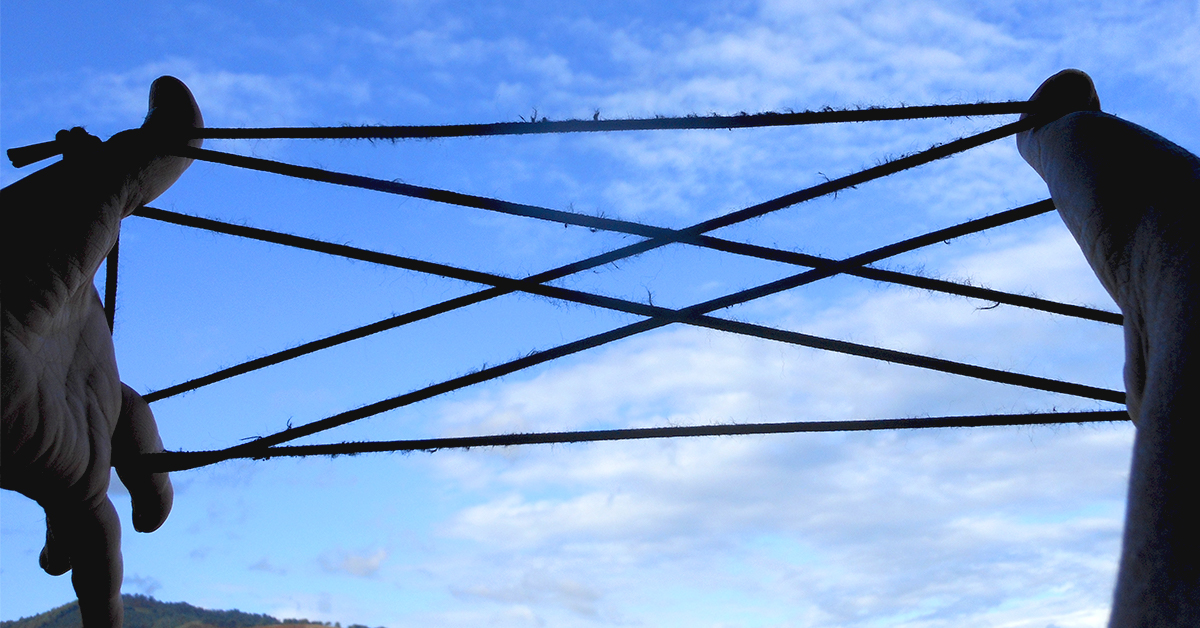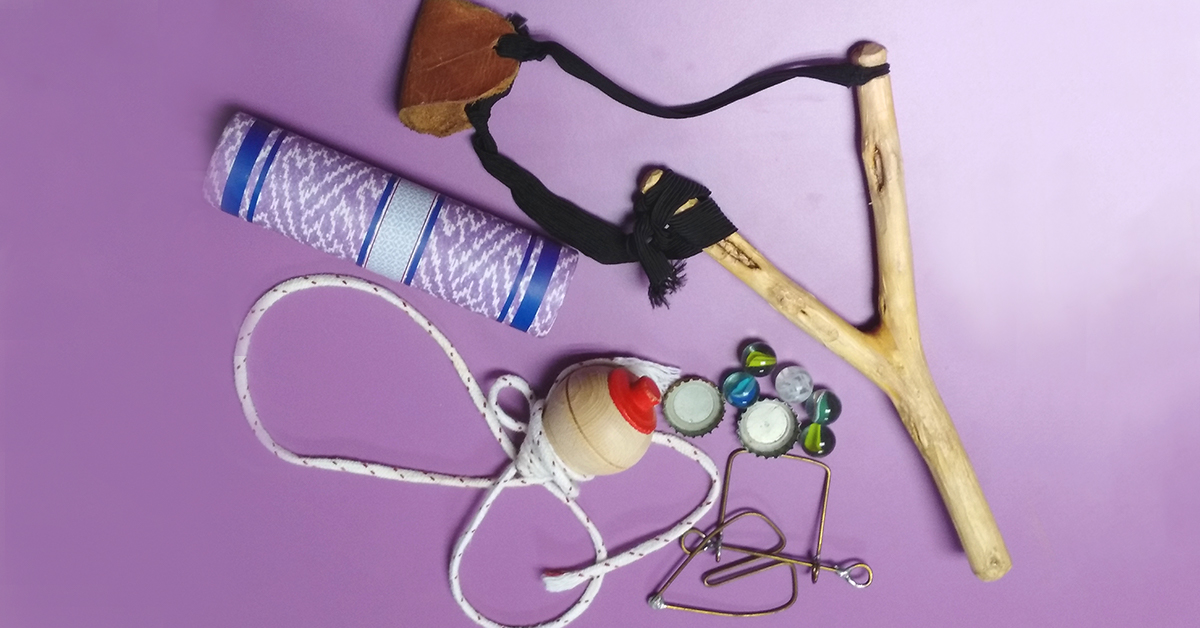
Strings and figures. Photo credit: Josu Larrinaga Zugadi.
Play is a social activity which develops in moments of leisure. Playful activities for each generation and age group usually have differentiating features, conditioned by the environment or seasons of the year, sometimes, and regulated by the practice itself or based on singular rites, other times.
Toys are often used to play with. And both play and toys are essential for the socialization and educational methodology of individuals and groups (group dynamics, therapies, etc.), the use of toys for didactic purposes and the increasing application of gamification (a technique which uses game methodology) in academic and professional environments standing out as at least worthy of consideration.
The toy itself is object of play and subject of desire, elaboration and constant manipulation, in accordance with the purpose of its creation. Commercially produced playthings aside, toys made by the protagonists of the game or their immediate environment are strongly related to their availability and use of materials from their own surroundings (water, earth, sand, vegetation, fauna, etc.), and even built with reusable elements from leftover materials or obsolete components.
A vast number of either existing or readily accessible materials are actually used to make toys, their basic foundation being: strings and strands (string figure games, ropes, balls…), or rubber bands, wood (sticks, bows and arrows, slingshots, marbles, spinning tops, swords, pistols, blocks or pieces…), paper (airplanes, boats, hats, pinwheels, bow ties, cards…), fabrics or kerchiefs, metals (jars, cans, rings, badges…), bone (knucklebones), glass (marbles and bottle caps), vegetation (reeds, flowers, cobs…), insects or animals, or the right combination of several of them (gravity racers, swings, yo-yos, tanks, dolls, balls, diabolos, boules…), and a variety of sound toys (flutes, bugles, whistles, roarers, drums, scrapers…).

Assorted toys. Photo credit: Josu Larrinaga Zugadi.
Toys enable social interaction and a gradual process of socialization for individuals or age categories, through the knowledge of techniques and experiences of construction of toys (simple or complex), encouraging the ability to elaborate them, imagination and creativity, or personal or collective resolution of situations, and seeking an adequate level of achievement in their attainment and a maintenance process in accordance with their duration or life expectancy.
Therefore, as mentioned above, the toy becomes a valuable device which expands existing educational capacity and skills through the act of play. Acquired or transmitted (peer or intergenerational agents), toys support the well-known methodology of collaborative challenge-based learning. That is to say, throughout a dynamic and significant process, they promote personal self-knowledge and help build relationships with the experiential, social and competence domains in the productive context of belonging.
Josu Larrinaga Zugadi – Sociologist
Translated by Jaione Bilbao – Ethnography Department – Labayru Fundazioa